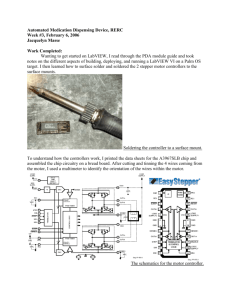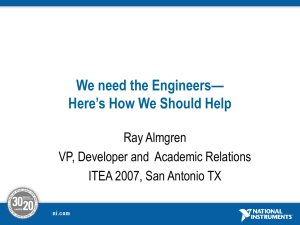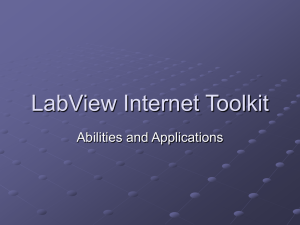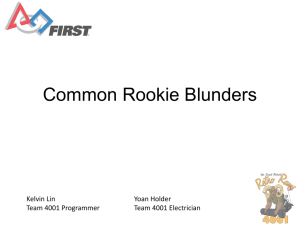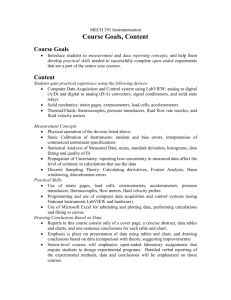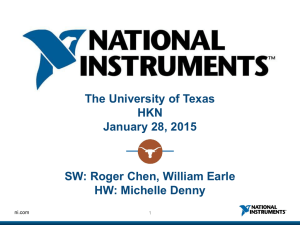CLAD Exam Preparation Resource Guide
advertisement
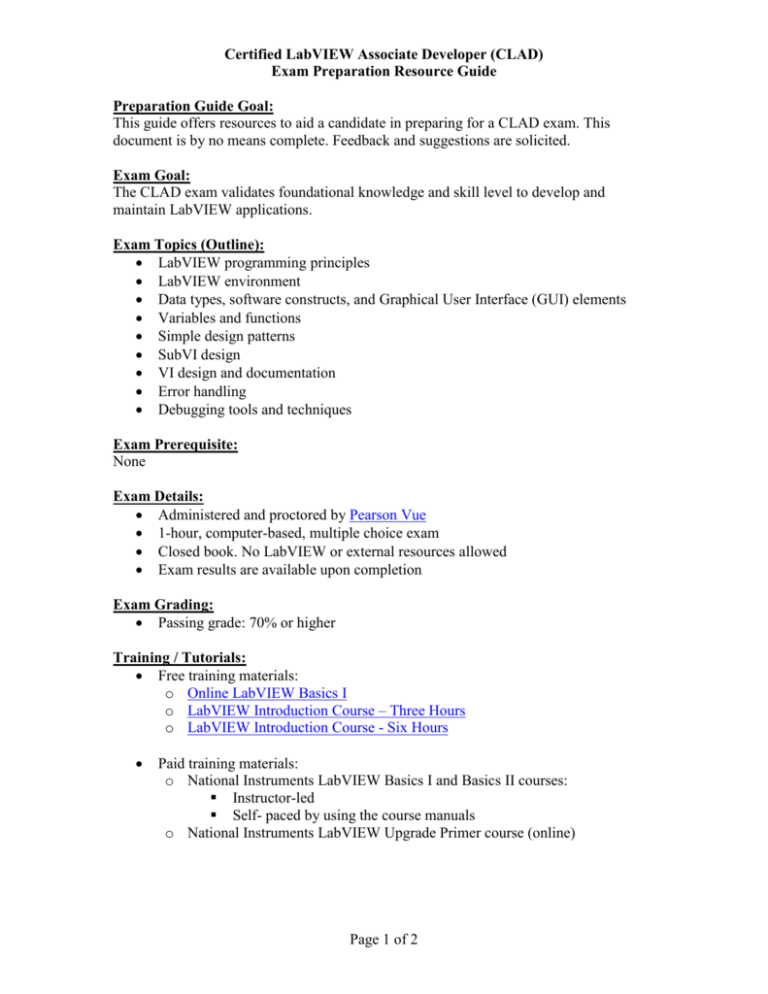
Certified LabVIEW Associate Developer (CLAD) Exam Preparation Resource Guide Preparation Guide Goal: This guide offers resources to aid a candidate in preparing for a CLAD exam. This document is by no means complete. Feedback and suggestions are solicited. Exam Goal: The CLAD exam validates foundational knowledge and skill level to develop and maintain LabVIEW applications. Exam Topics (Outline): LabVIEW programming principles LabVIEW environment Data types, software constructs, and Graphical User Interface (GUI) elements Variables and functions Simple design patterns SubVI design VI design and documentation Error handling Debugging tools and techniques Exam Prerequisite: None Exam Details: Administered and proctored by Pearson Vue 1-hour, computer-based, multiple choice exam Closed book. No LabVIEW or external resources allowed Exam results are available upon completion Exam Grading: Passing grade: 70% or higher Training / Tutorials: Free training materials: o Online LabVIEW Basics I o LabVIEW Introduction Course – Three Hours o LabVIEW Introduction Course - Six Hours Paid training materials: o National Instruments LabVIEW Basics I and Basics II courses: Instructor-led Self- paced by using the course manuals o National Instruments LabVIEW Upgrade Primer course (online) Page 1 of 2 Certified LabVIEW Associate Developer (CLAD) Exam Preparation Resource Guide Web Resources: LabVIEW Development Guidelines Free practice LabVIEW Fundamentals Exam National Instruments Academic Web National Instruments Developer Zone National Instruments Developer (LabVIEW) Zone National Instruments LabVIEW Zone National Instruments LabVIEW Support LabVIEW Manuals Online (current manuals) Free tutorials: o LabVIEW Review (Colorado School of Mines) o LabVIEW Tutorial (University of Sydney) o LabVIEW for Dummiees© (Illinois Institute of Technology) o LabVIEW Tutorial (University of Buffalo) o LabVIEW Tutorial Series (University of Western Australia) The following table lists additional resources for specific topics: Topic Details of resources by topic LabVIEW programming Using a Polymorphic VI to Handle Inputs of Different Data principles Type, Representation, and Dimension Polymorphic Units in LabVIEW Data types, software LabVIEW Data Storage constructs, GUI Handling Different LabVIEW Data Types elements, and Property LabVIEW Custom Controls, Indicators, and Type Nodes Definitions Graphs and Charts Mechanical Action of Booleans Loops and Structures Formula Node Example LabVIEW Strings, File I/O, and Property Nodes Variables and functions Local and Global Variables Arrays and Clusters File I/O Waveforms Examples: o Controls: labview\examples\general o Express VIs: labview\examples\express Simple design patterns Application Design Patterns: State Machines LabVIEW Application Design Patterns Page 2 of 2
